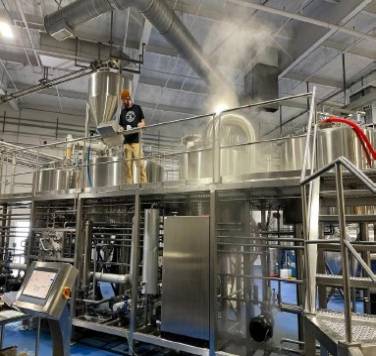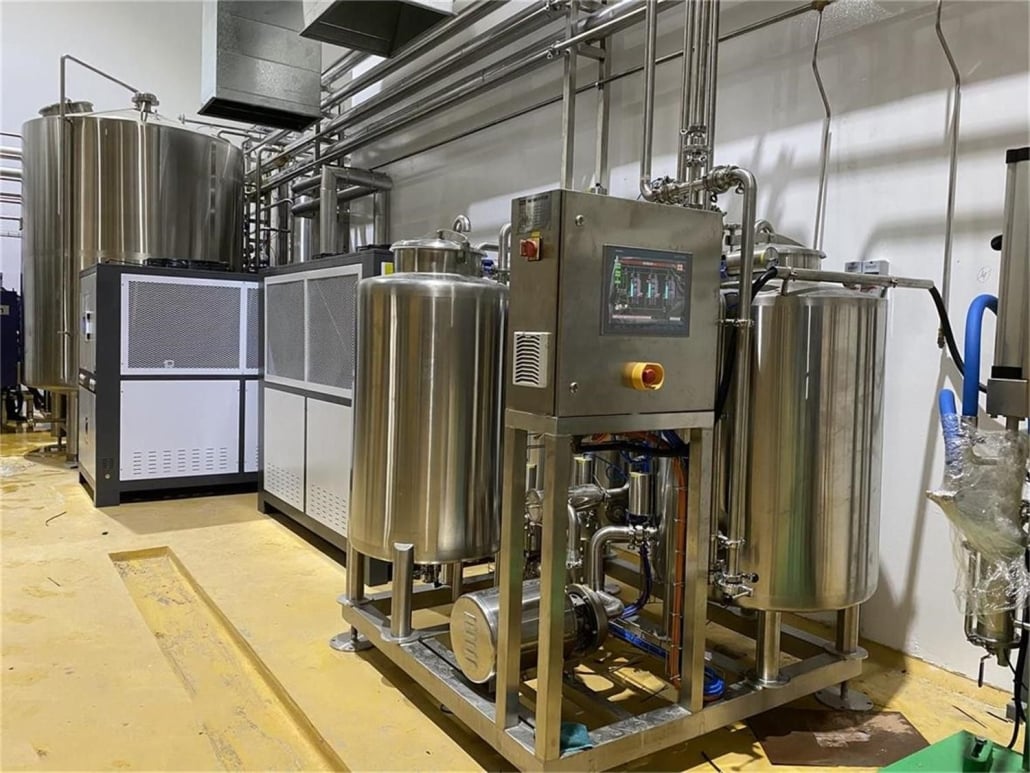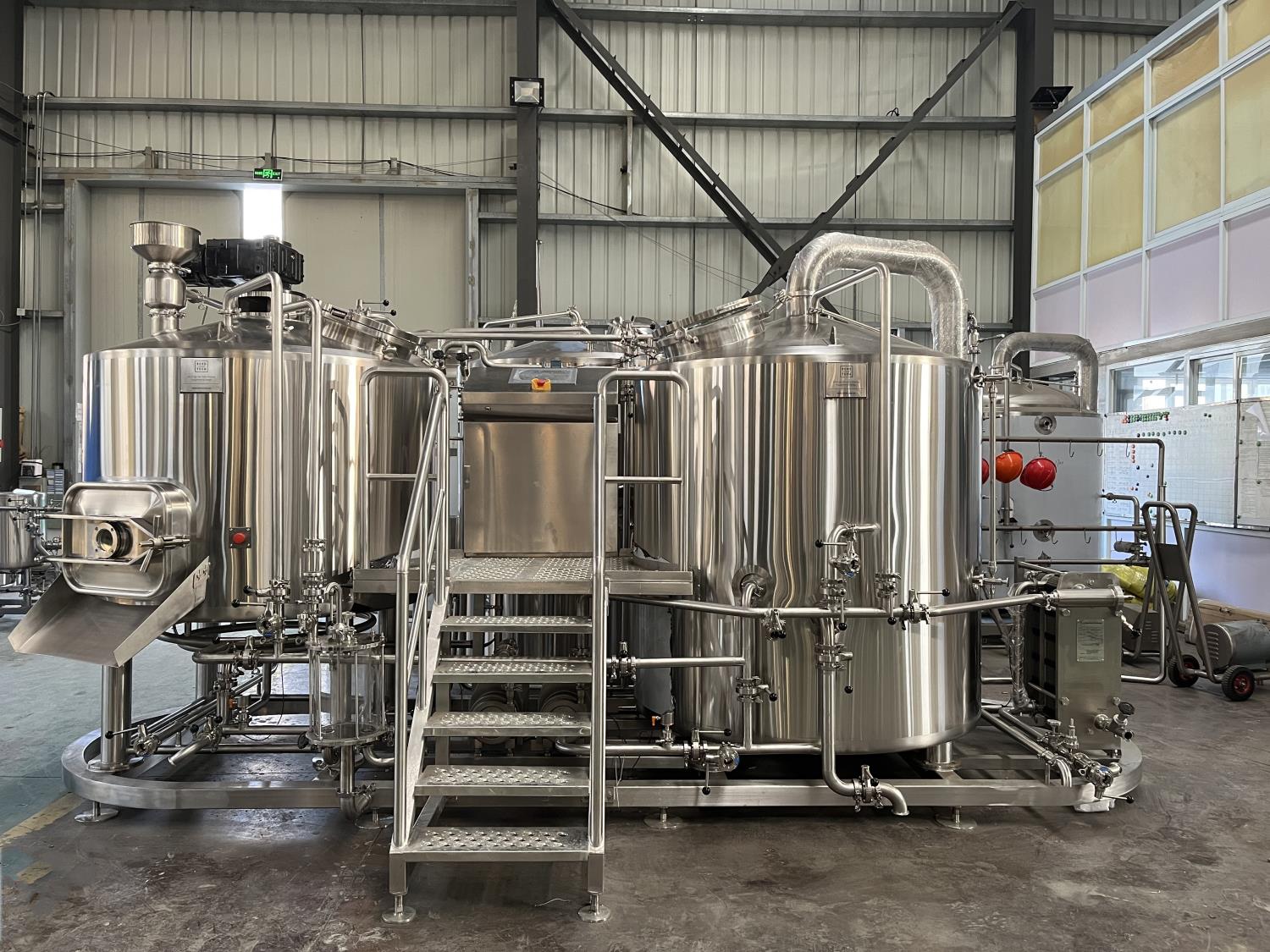Stainless Fermentation Vessels
When it comes to fermentation, stainless steel fermentation vessels have become the gold standard in industries ranging from craft brewing to winemaking. Why? Well, stainless steel isn’t just shiny and sleek; it’s packed with features that make it indispensable for anyone serious about creating high-quality beverages or food products. In this comprehensive guide, we’ll dive deep into everything you need to know about stainless fermentation vessels—from their design and customization options to their maintenance and cost analysis. So, grab a cup of your favorite brew, and let’s get started.
Overview of Stainless Fermentation Vessels
Stainless fermentation vessels are tanks or containers made from stainless steel, specifically designed for fermenting beverages like beer, wine, cider, or kombucha. Their primary function is to provide a controlled environment where microorganisms can thrive, turning sugars into alcohol, acids, or gases, depending on the product.
What sets stainless steel apart? It’s durable, non-reactive, easy to clean, and resistant to corrosion. These vessels can handle both small-batch artisanal production and industrial-scale operations, making them versatile and highly sought-after in the brewing and fermentation world.
Why Stainless Steel?
Think of stainless steel as the superhero of materials. Unlike its rivals—plastic or wood—it doesn’t leach flavors, absorb odors, or wear out quickly. Plus, its shiny surface isn’t just for show. It’s non-porous, which means bacteria have nowhere to hide, ensuring superior hygiene.

Key Equipment Features and Benefits
Stainless fermentation vessels come in various shapes and sizes, but they share some standout features that make them exceptional for fermentation. Let’s explore these features in detail:
1. Material Quality
Stainless steel, typically 304 or 316 grade, is corrosion-resistant, making it perfect for acidic fermentation environments. Its longevity outpaces alternatives like plastic or wood, saving you money over time.
2. Temperature Control
Many vessels include integrated glycol cooling jackets or immersion coils, allowing precise temperature management. This is critical for maintaining the consistency and quality of your ferment.
3. Airtight Seals
Oxygen exposure can ruin fermentation. Stainless steel tanks often come with airtight gaskets and pressure-relief valves, ensuring a controlled, oxygen-free environment.
4. Ease of Cleaning
A polished interior finish prevents residue buildup, while Clean-In-Place (CIP) systems simplify sanitation without requiring manual scrubbing.
5. Aesthetic Appeal
Let’s face it—stainless steel just looks professional. Whether you’re running a homebrew operation or a full-scale brewery, it adds an element of sophistication.
Types of Stainless Fermentation Vessels
To help you choose the right vessel, here’s a breakdown of the common types:
| Type | Description | Best For |
|---|---|---|
| Conical Fermenters | Feature a cone-shaped bottom for easy yeast and trub collection. | Breweries and wineries. |
| Cylindrical Tanks | Straight-walled tanks, often used for secondary fermentation or storage. | Kombucha or cider production. |
| Unitanks | Dual-purpose tanks for fermentation and conditioning. | Breweries aiming for efficiency. |
| Open-Top Fermenters | Allow air exposure, used in traditional winemaking or specialty beer production. | Artisan winemakers. |
| Horizontal Tanks | Space-saving tanks designed to maximize footprint efficiency in compact brewing spaces. | Breweries with limited space. |
Brewing Process in Stainless Steel Vessels
Fermentation in a stainless vessel might feel like magic, but it’s pure science. Let’s break it down:
1. Preparation and Cleaning
Start with a clean slate—literally. Stainless steel vessels require thorough cleaning and sanitization to eliminate contaminants. This is where the CIP systems shine.
2. Adding Ingredients
Whether it’s beer wort or grape must, you’ll transfer your ingredients into the tank. Some tanks include ports for easy filling.
3. Fermentation
Temperature control kicks in here. For beer, yeast ferments sugars into alcohol at precise temperatures. Winemakers may monitor sugar levels using hydrometers.
4. Monitoring
Modern tanks often include sight glasses, pressure gauges, and temperature probes, making it easy to monitor progress without opening the vessel.
5. Yeast Harvesting and Trub Removal
In conical fermenters, the sediment naturally settles at the bottom, allowing easy collection or disposal via a drain valve.
Design, Layout, and Customization Options
| Parameter | Details |
|---|---|
| Capacity | Vessels range from 5 gallons for homebrewers to 100,000 gallons for industrial setups. |
| Space Considerations | Horizontal tanks save vertical space; modular designs allow for expansion in confined spaces. |
| Insulation | Optional insulation jackets maintain stable temperatures for long fermentation cycles. |
| Customization | Add-ons like sight glasses, multiple ports, or external finishes can match specific brewing needs. |
| Aesthetic Choices | Choose between a polished mirror finish or a brushed matte surface. |
Cost and Suppliers
Price Ranges
| Type of Vessel | Capacity | Price Range |
|---|---|---|
| Small Homebrew Tanks | 5–15 gallons | $300–$800 |
| Conical Fermenters | 1–10 barrels | $2,000–$15,000 |
| Industrial Vessels | 50+ barrels | $20,000–$100,000+ |
Top Suppliers
| Supplier | Specialty | Estimated Cost |
|---|---|---|
| Blichmann Engineering | Homebrewing and small-batch equipment. | $500–$5,000 |
| Ss Brewtech | Modular, customizable unitanks. | $2,000–$10,000 |
| JVNW (JV Northwest) | Industrial-scale fermentation tanks. | $50,000–$100,000+ |
Installation, Operation, and Maintenance
| Aspect | Details |
|---|---|
| Installation | Requires skilled technicians for plumbing glycol systems, ensuring proper leveling and sealing. |
| Operation | User-friendly controls make it simple to monitor fermentation, but operator training is recommended. |
| Maintenance | Regular cleaning is key; periodic inspections prevent corrosion and ensure gasket integrity. |
How to Choose the Right Supplier
Considerations
- Reputation: Look for reviews or case studies of successful installations.
- Customization Options: Does the supplier offer the features you need?
- Warranty and Support: Ensure post-sale support and a robust warranty.
| Factor | Why It Matters |
|---|---|
| Lead Times | Shorter lead times ensure faster setup for your production. |
| Quality Assurance | Certifications like ISO 9001 indicate consistent manufacturing standards. |
| After-Sales Service | Essential for long-term operation and troubleshooting. |

Pros and Cons of Stainless Fermentation Vessels
| Advantages | Limitations |
|---|---|
| Easy to clean and sanitize | Higher upfront cost compared to plastic or wood. |
| Durable and long-lasting | Requires more maintenance than simpler systems like glass carboys. |
| Aesthetic and professional look | Heavy and less portable than plastic options. |
| Temperature control integration | Installation of glycol systems can be complex and expensive. |
FAQ
| Question | Answer |
|---|---|
| Why choose stainless over plastic? | Stainless steel is more durable, hygienic, and allows better temperature control. |
| How long do stainless vessels last? | With proper care, they can last decades. |
| Can I ferment acidic beverages in them? | Absolutely. Stainless steel resists corrosion even in acidic environments like kombucha. |
| Are they worth the investment? | Yes, for professionals or serious hobbyists. They save money in the long run. |
| What’s the maintenance routine? | Regular cleaning and inspections for gaskets and seals ensure optimal performance. |
Additional FAQs on Stainless Fermentation Vessels (2025)
1) 304 vs 316 stainless: which should I choose?
- 304 suits most beer and wine applications. Choose 316 for highly acidic or saline ferments (e.g., sour beer, kombucha, mixed culture) and for CIP chemicals at higher temps; it offers superior pitting and chloride resistance.
2) What interior finish is best for hygiene?
- A polished, passivated finish of Ra ≤ 0.8 µm (32 µin) minimizes biofilm adhesion and speeds CIP. Electropolishing further reduces micro-roughness and improves cleanability for high-throughput plants.
3) Do I need pressure-rated unitanks?
- If you plan natural carbonation, spunding, or direct-to-package transfers, yes. Specify certified pressure ratings (e.g., 1–3 bar/15–45 psi), dual PRVs, and ASME/CE stamping where required.
4) How should I spec cooling on stainless fermentation vessels?
- Glycol jackets with zoned control (cone + body) provide even cooling and faster crash. Size chillers for 2–4 kW per active 10 hL during peak ferment, with 20–30% headroom for crash cooling and future tanks.
5) What gasket and seal materials are most durable?
- EPDM is a strong all-rounder for caustic/acid CIP; FKM (Viton) resists higher temps/solvents; silicone is flexible but can swell with some chemicals. Match elastomers to your cleaners/sanitizers and replace on an annual cycle or per wear.
2025 Industry Trends for Stainless Fermentation Vessels
- Oxygen control by design: More unitanks ship with low-oxygen features—deaerated liquor ports, sealed runoff manifolds, and inert gas blanketing fittings.
- Data-ready tanks: Embedded RTDs, pressure transducers, and flowmeters wired to PLC/OPC UA for batch logs, traceability, and predictive maintenance.
- Sustainability upgrades: Better insulation, heat loss reductions, and CIP optimization (rotary spray devices + low-foam chemistries) cutting thermal/water use 15–25%.
- Hygiene and safety: Wider adoption of electropolished internals, hygienic weld standards, PRV validation schedules, and CIP coverage tests at commissioning.
- Faster deployments: Pre-piped manifolds and skid-mounted cellar modules shorten install and validation timelines; typical custom lead times 12–20 weeks.
2025 Benchmarks and KPIs for Stainless Fermentation Vessels
| Metric (2025) | Typical Range/Target | Notes/Source |
|---|---|---|
| Interior surface roughness (Ra) | ≤0.8 µm (32 µin); premium ≤0.5 µm | Improves cleanability |
| Pressure rating (unitank) | 1–3 bar (15–45 psi) | Verify ASME/CE stamp |
| Jacket test pressure | ≥1.5× operating | OEM hydrostatic test |
| Oxygen ingress during transfers | <30–80 ppb DO (pro); <100–200 ppb (home) | BA/ASBC-aligned |
| Water use per hl beer | 3.5–5.5 hl/hl with optimized CIP | Sustainability target |
| CIP contact times | 15–30 min caustic; 10–20 min acid | Follow chemical SDS |
| Cooling load per active 10 hL | 2–4 kW (peak) | Add 20–30% headroom |
| Lead time (custom vessels) | 12–20 weeks | OEM disclosures 2025 |
Selected sources: Brewers Association QA/sustainability guidance; ASBC Methods of Analysis; OEM spec sheets and case studies (GEA, Krones/Steinecker, Specific Mechanical, Portland Kettle Works, JVNW); industry trade press 2024–2025.
Latest Research Cases
Case Study 1: Electropolished Unitanks Reduce CIP Time and Water Use (2025)
- Background: A regional brewery reported long CIP cycles and variable microbiological swabs on legacy tanks.
- Solution: Replaced two legacy fermenters with electropolished, Ra ≤0.5 µm unitanks; installed rotary spray devices and validated CIP coverage; updated SOPs and chemical concentrations.
- Results: CIP cycle time reduced 22%; water/hl down from 5.7 to 4.4; ATP failures dropped to zero over 60 days; annualized savings covered premium finish cost in 18 months.
Case Study 2: Low-Oxygen Upgrades Extend IPA Shelf Life (2024)
- Background: Packaging returns due to staling notes at 60–75 days cold storage.
- Solution: Added inert gas blanketing, deaerated liquor for knock-out and dry hop dosing, closed transfers tank-to-filler, and inline DO monitoring on the brite outlet.
- Results: Knock-out DO median decreased from 170 ppb to 60 ppb; sensory shelf life extended ~4 weeks at 4°C; returns reduced 38% over two quarters.
Expert Opinions
- Tom Shellhammer, Ph.D., Professor of Fermentation Science, Oregon State University
- Viewpoint: “Tank design that limits oxygen ingress and manages trub carryover is foundational to flavor stability—especially for hop-forward beers.”
- Source: Academic presentations and brewer workshops, 2024–2025
- Mary Pellettieri, QA Consultant; Author of Quality Management for Craft Beer
- Viewpoint: “Tie vessel SOPs to data. Verify PRVs, document CIP coverage, and measure DO/TPO at critical points to prevent costly quality drift.”
- Source: QA training and consulting, 2024–2025
- John Mallett, Brewing Operations Expert and Author
- Viewpoint: “Specify hygienic welds, accessible manways, and standardized gaskets. Designing for maintenance reduces downtime and contamination risk.”
- Source: Operations seminars and industry panels, 2024–2025
Practical Tools and Resources
- Brewers Association QA, safety, and sustainability resources: https://www.brewersassociation.org
- ASBC Methods of Analysis (oxygen, microbiology, sensory): https://www.asbcnet.org
- OEM engineering and specs (GEA, Krones/Steinecker, JVNW): https://www.gea.com | https://www.krones.com
- Specific Mechanical and Portland Kettle Works (fermenter specs/case studies): https://specificmechanical.com | https://portlandkettleworks.com
- Anton Paar instruments (DO/TPO, CO2, density): https://www.anton-paar.com
- ProBrewer forums (cellar design, CIP validation, PRV testing): https://www.probrewer.com
- DSIRE database for energy/water incentives (US): https://www.dsireusa.org
Note: Confirm pressure vessel certifications (ASME/CE), jacket/PRV test reports, and material certificates. Match elastomers (EPDM/FKM/silicone) to your cleaners/sanitizers. Validate CIP coverage and record DO/TPO at knock-out, tank transfers, and packaging to ensure consistency and shelf life.
Last updated: 2025-09-29
Changelog: Added 5 targeted FAQs, 2025 trend insights with KPI table, two vessel-focused case studies, expert viewpoints, and vetted tools/resources specific to stainless fermentation vessels
Next review date & triggers: 2026-03-31 or earlier if OEM lead times or QA benchmarks change materially, new DO/TPO targets are issued by BA/ASBC, or major incentives for efficiency/electropolish upgrades are introduced
Share this entry
Interested in learning more about Brewing Systems including additional details and pricing information? Please use the form below to contact us!
YOLONG BREWERY EQUIPMENT FAQS
- Commercial Brewery / Craft Brewery / Microbrewery / Nanobrewery
- What is The Difference Between Craft Beer and Industrial Beer?
- The Bespoke Differences In Custom Brewing Systems
- Everything You Need to Know About Kettle Souring
- How to Choose Brewing Equipment for Your business?
- How To Choose The-Best Partner To Build Your Commercial Microbrewing System?
- Two Detection Sensors That You Need To Use In Your Brewhouse System
- Remote Control Applications in Brewing Equipment/How does it work?
- How To Clean Your Brand New Brewery Tanks?

